How the CX GL came into being
How the CX-GL series came into being:
Credit to Rob Davis and Blindstitch, blatantly copied from the forums. Add to it!
Posted 11 August 2010 - 07:00 PM
Brief introduction: In the U.S., the CX/GL series was sold for five years. In 1978 there was just one model, denoted as a CX500, sometimes referred to as a CX500A. In 1980, there was a minor face-lift, and production was split into two models- the standard was now called the “Deluxe”, and a cruiser-influenced "Custom" was added. They differ primarily in bodywork. In 1981, Honda added two more models, the GL500 and GL500i Silverwing. While they used the same basic engine as the CX500A/C/D, and appear similar at first glance, they were actually entirely different bikes based on a frame that shared few parts with the CX. They had upgraded brakes, a different intake design, and a new ignition system. The i (Interstate) model featured a standard fairing and luggage for touring. In 1982 the GL500 and GL500i were basically unchanged. The CX500 got the new ignition system. Another model was added, the CX500 Turbo, different from both the CX/C and the GL! In 1983, Honda raised the stakes by increasing the displacement of the engine to 650cc. We now had the CX650C, GL650/i, and CX650T for exactly one year before Honda North America pulled the series from the U.S. market. The Honda CX500 and Variants
Some folks call them the ugliest bike ever made, and say the "Plastic Maggot" was awful.
CX - Charisma eXtrordinaire
PROTOTYPES
Honda developed the CX500 from two prototype models. Here the CX350 is shown in development form, with the engine married into a modified CB200 frame.
There is not much of the CX500 to see here, and the long exhaust pipes suggest some trouble in Honda's attempts to get the exhaust system right!
There was also a turbo charged variant of one of these early prototypes.
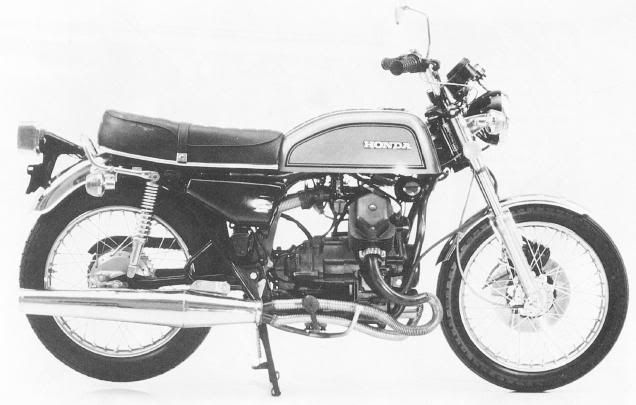
|
| Posted Image |
However, the engine does demonstrate one or two of the characteristics of its eventual grandson.
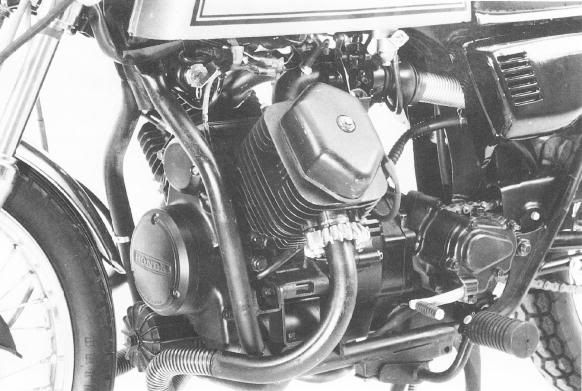
|
| Posted Image |
Nobody seems to know if the CX360 was a production model or an advanced prototype.
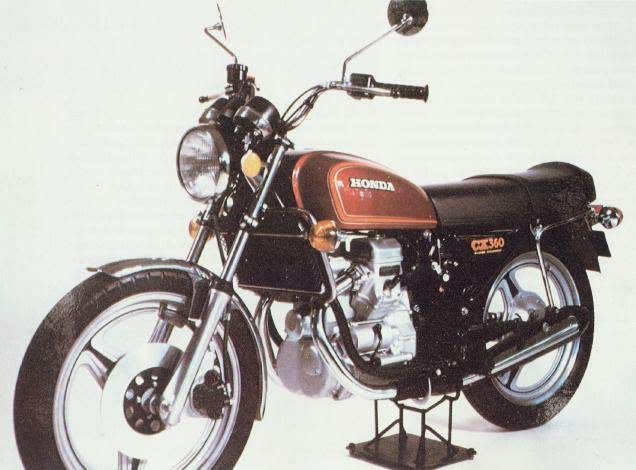
|
| Posted Image |
Here you can see a lot more of the family line; water cooling, engine shape, styling and early Comstar type wheels.
Honda haven't yet effected the twisted cylinder heads of the true CX500.
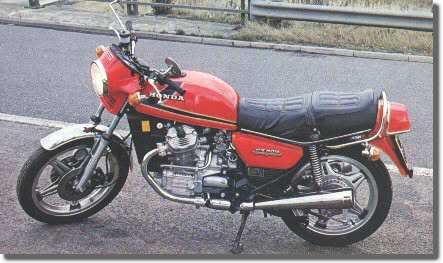
|
| Posted Image |
When the "real" CX500 arrived in the UK in June 1978 as an in-line-crankshaft short-stroke V-Twin cylinder, 5 speed, shaft drive, watercooled touring machine with a capacity of 496cc developing 50 brake horsepower, it was a revelation.
Concerned about carburetors and riders' knees colliding, Honda had now twisted the cylinder heads inwards by 22 degrees, giving the engine a very distinctive inlet-exhaust line. The 80-degree firing angle gives the CX that characteristic engine purr, so beloved of V-twin engine fans.
Unusually for Honda engines of the day, it had an overhead valve (OHV, or pushrod-operated) 4-valve-per-cylinder engine. It proved very easy to ride, economical, reliable and unburstable, quickly acquiring a very large following, particularly in the dispatch rider market. With the engine placed at the bike's exact center of gravity, it was surprisingly agile for its size.
The Moto-Guzzi V50 was the CX's only class rival. It too was an in-line-crankshaft V-twin, 500cc shaft drive. Its aircooled engine was more bulbous, and although its Italian styling was more aesthetic than the CX, its performance was inferior, as was its longevity and general build quality.

|
| Posted Image |
The CX500 generally replaced the CB500/4 and CB550/4, the very British-styled CB500T, and arguably the CB400 Superdream, although the ubiquitous Superdream in both 250cc and 400cc variants continued to be produced after the CX arrived. It therefore gave many riders the experience of a "real bike" after passing their UK L-Tests (later, the Part 2 Test), on a 125cc.
Not only is it easy to ride; stable and forgiving, but It was, and is, easy to maintain even for the home mechanic, everything being made simple by the engine layout. With the cylinder heads projecting towards the rider's knees making tappet checks and adjustments is particularly easy, and a decoke is far less hassle than a conventional engine. Honda made the gearbox spin in the opposite direction to the crankshaft, to cancel out most of the torque effect inherent with inline crankshaft V-twin engines. Its barrels/cylinders, however, are integrated into the engine block, being cast into the engine centre section and not detachable.
The early model (shown at the top of the page) was known as either the CX500 or CX500Z (Zero) , and models with the frame numbers in the range 2000001-2034366 suffered a shortcoming in the design of the cam chain tensioner. The spring loaded adjusting blade, released manually by a locknut to take up slack and wear in the cam chain, vibrated excessively and in many cases, broke. This left the rider with, at best, a noisy engine and at worst, a wrecked one. This sad deficiency marred the early days of the CX500 but Honda quickly produced a free fix, consisting of a longer supporting plate and a few modifications to the internal mountings. This did involve removing the engine, but dealers carried out this work for free and nowadays seeing one of the old adjusting mechanisms is very rare indeed.
Having said that, some CX500Zs do still crop up with unmodified parts. Dealers stamped three dots in the crankcase, close to the engine serial number, to indicate that these modifications had been carried out. Any surviving engine of this vintage is unlikely to be still unmodified.
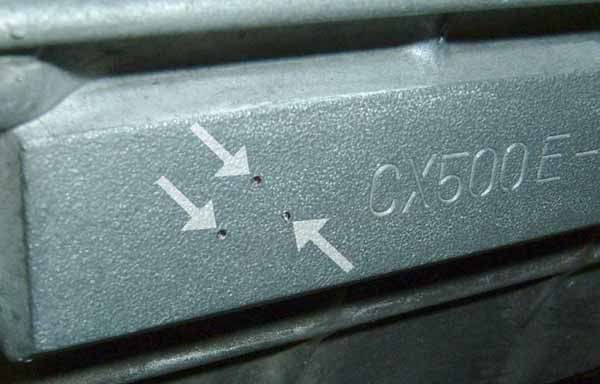
|
| Posted Image |
Once the early cam chain problems were resolved, the CX500 rapidly became the dispatch rider's dream bike. You could seriously neglect it, crash it, leave it out in the foulest weather, run it up and down the motorway all day at 80 and it would never let you down. In the 1980s every other motorcycle in London was a DR and every other DR was on a CX500. The bike quickly acquired a reputation as one of Honda's most successful and reliable models. This explains why so many CXs still survive, compared to the almost equally successful 250 and 400 Superdreams. In the UK today it's rare to see a Superdream about (or even more rare to see a 250 or 400 Dream), but CXs pop out of from under the covers quite regularly, especially as the model gradually acquires cult status.
In 1980 the CX500A was released. Changes to it were mainly cosmetic, such as the polished aluminium radiator shrouds rather than the black plastic one-piece surround of the CX500Z model.
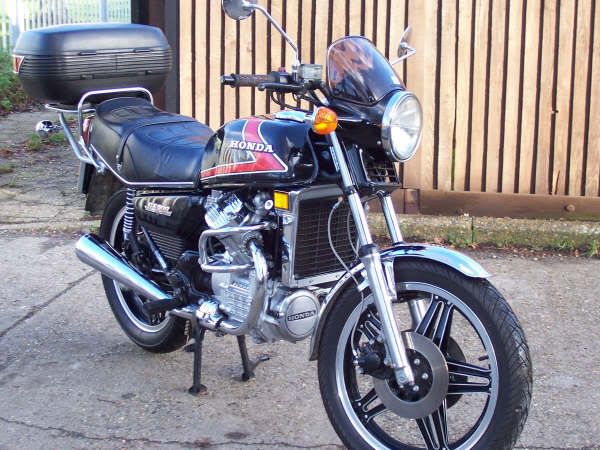
|
| Posted Image |
But it was essentially the same, now fitted with the modified cam chain adjusting components as standard. The B model followed a year later with more cosmetic changes. The A/Bs have the polished aluminium radiator shrouds, a flyscreen, lack the black plastic tabs over the spoke/wheel attachments, and have a rectangular instead of barrel-shaped front brake master cylinder. The B has black anodised reversed-plate Comstar wheels, whereas the A has plain silver ones. Also the B has the improved crankcase breather pipe, which comes from the rear engine casing instead of from the cylinder head, and the B has a slightly differently shaped rectangular brake cylinder to the A.
Note that the North American variants usually have a single front disc brake, and as a result, they are distinctly underbraked.
The C "Custom" versions (top) satisfies the more laid-back riders.
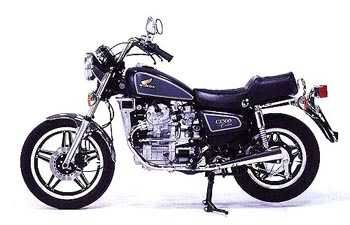
|
| Posted Image |
The Silver Wing is a fully-faired hard-luggage tourer.
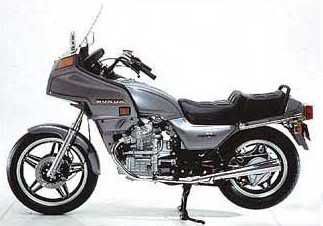
|
| Posted Image |
There was also a "D" Deluxe variant
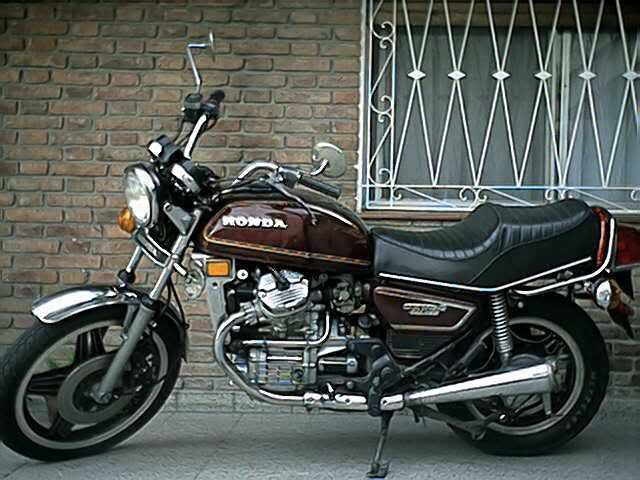
|
| Posted Image |
The CX500 is ever a practical motorcycle. It's shaft drive requires virtually no maintenance, and makes rear wheel removal a five minute, and hands-clean, job. A massive radiator (left) solves summer overheating problems and keeps the engine at the optimum temperature, for both economy and longevity.
Undeniably a heavy, and with a full fuel load, particularly top-heavy design, it turns in a surprisingly agile performance for an elderly V-Twin, 500cc pushrod engine. It will cruise comfortably at anything between 50 and 80, and whilst clearing the ton means a long straight road and the ghost of a tailwind, it will top 105 mph in a dive.
Some riders have reported 115 mph, but this must be a doubtful claim on the straight and level.
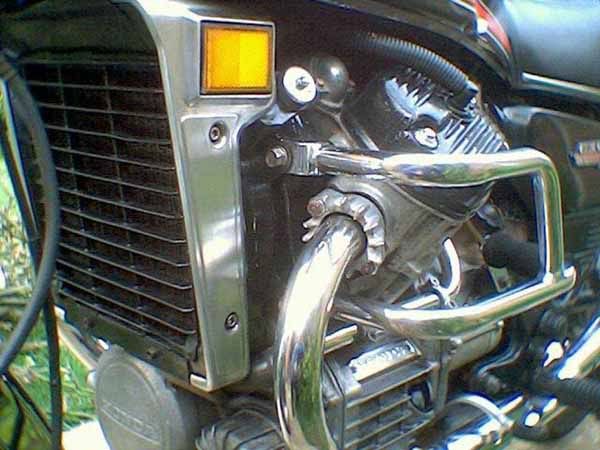
Its clutch is feather-light, but its chief characteristic is an astonishing amount of torque at low revs, reminiscent of a modern diesel engine. It will trundle along happily at well under 30 mph in 5th gear and still pull away cleanly from that speed. Geared to 12 mph / 1,000 revs and redlined at 9,650, the motor always seems unburstable. Hard indeed is the rider who cannot achieve 50 mpg (Imperial gallons, 8 pints/gallon) and many return 55-60 mpg even at 20-25 years old.
In 1983 the Eurosport model had a major facelift with monoshock rear suspension, transistorised electronc ignition, new style wheels, and air forks. The standard set of two x single piston caliper front, and rear drum, brake gave way to 2 x twin piston calipers at the front and single at the rear, vacuum fuel tap and fuel gauge. This model had an automatic cam chain tensioner, too.

|
| Posted Image |
Evidently pleased with their success, Honda upped the capacity, and the CX650 was born. Never made in the same numbers, the 650 is an outstandingly good motorcycle, now much sought after by CX fans. Its 673cc capacity overcomes its weight and it's altogether the bike that the 500 should have been.
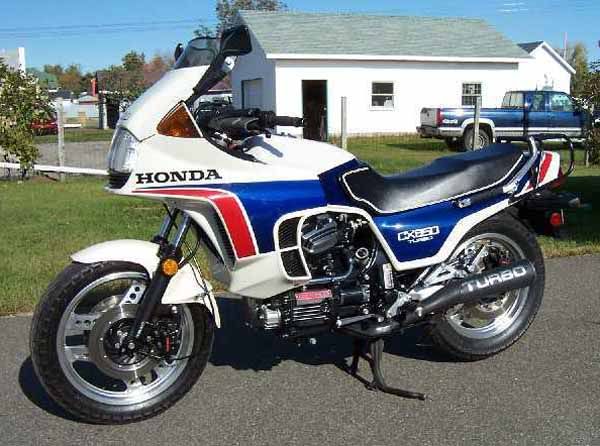
|
| Posted Image |
GL650 came in various guises of different styling, with deluxe hard luggage and so on. These were particularly popular in the North American market, and are excellent touring machines.
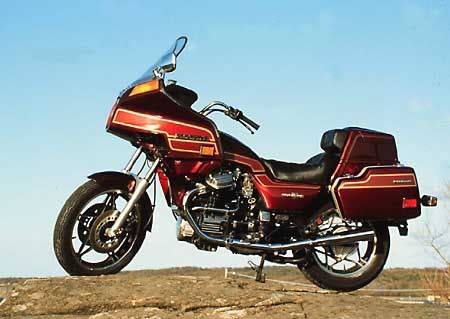
|
| Posted Image |
I can't for the life of me understand why Honda didn't produce this model in 750 or 850 versions, although various other countries had different variants - France's CX400 and Australia's GL700 to name only two. My email correspondence shows that a GL400 recently cropped up in Argentina, and a CX400 in the Netherlands.
Kathy Leslie in Australia says of the GL700 : "The GL700 Wing Interstate model was a production run of about 800 bikes that were made exclusively for the Japanese domestic market during 1983/4. They were meant to satisfy the desire of Japanese motorcyclists to own the GL1100 and GL1200 Goldwings (they weren't allowed to due to a 750cc restriction which has subsequently been removed); and the motor in the GL700 is the same 673cc motor used in all the CX650 models - I guess that in the 'more is better' stakes, 700 is obviously much closer to the 750 limit than 650!!"
US Custom 650. A few of these reached the UK, but they are rarely seen. The styling is quite different to the standard CXs. Note the single front disc, star wheels, truncated silencers and exaggerated custom styling. Quite a sought after variant.
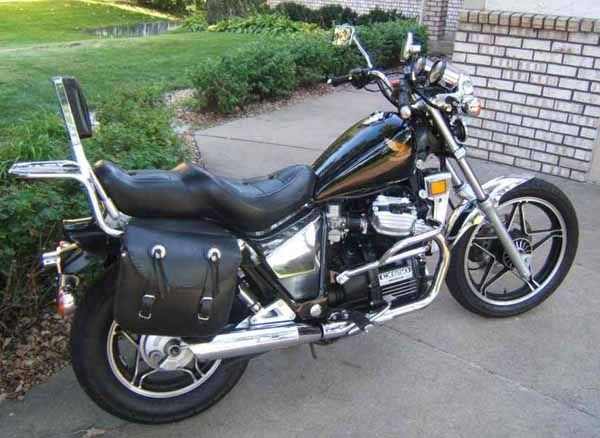
|
| Posted Image |
Both the CX500 and CX650 also had Turbo models (CX650T, left) - these are very rare indeed. I rode the CX650T round Donington once, and it was easily the best bike I've even been on. Only about 1,700 CX650Ts were made.

|
| Posted Image |
Anyone lucky enough to have the chance to ride a 500 or 650 Turbo will wonder where Honda managed to hide the extra engine that seems to be lurking inside the plumbing! The power delivery is very progressive, with a very distinct between-the-ankles rumble as the Turbo starts its business, at which point the extra engine wakes up.
This site is backed by Number 85, who provide the hosting. If you need a website done, get in touch with them.
